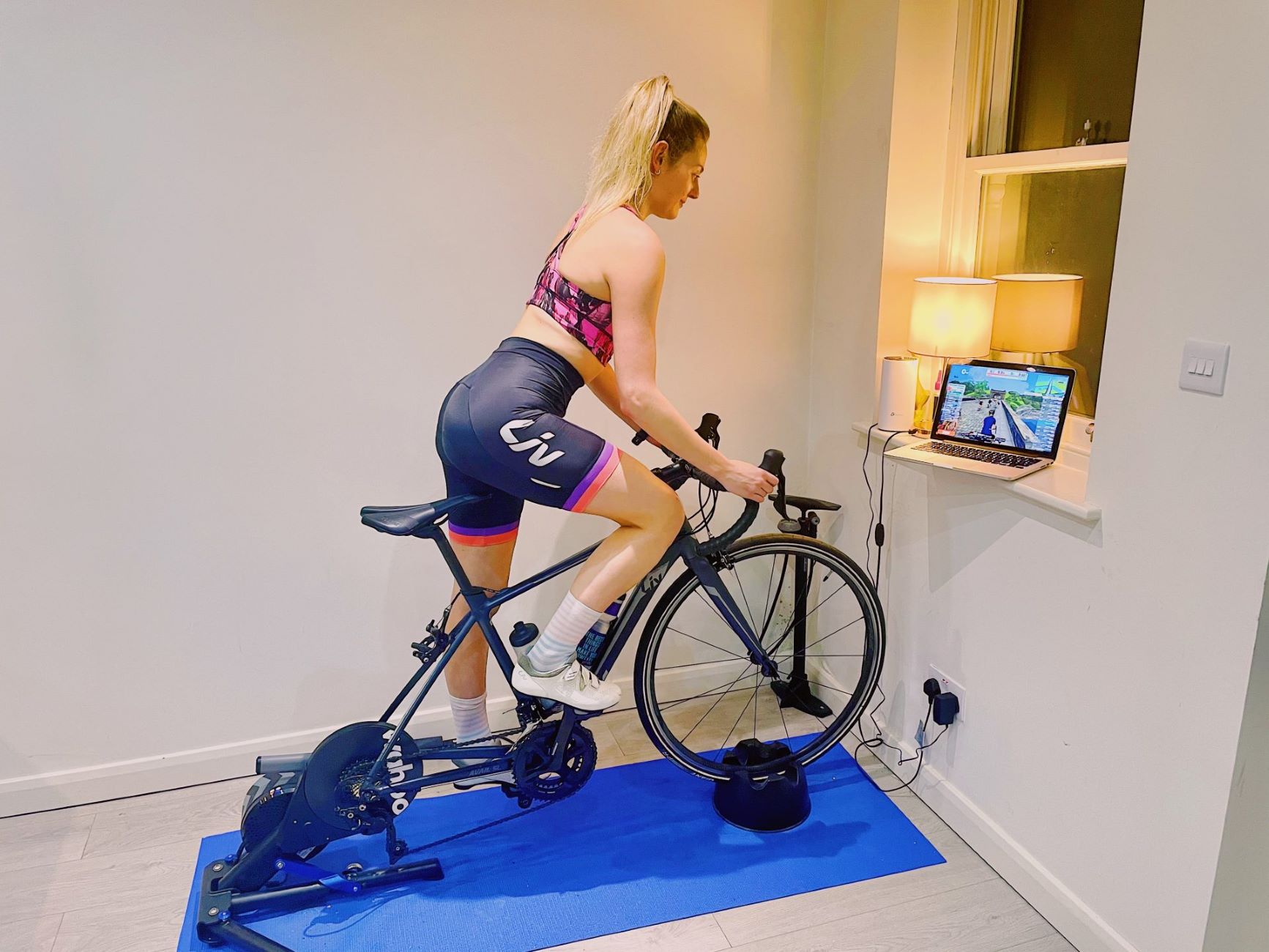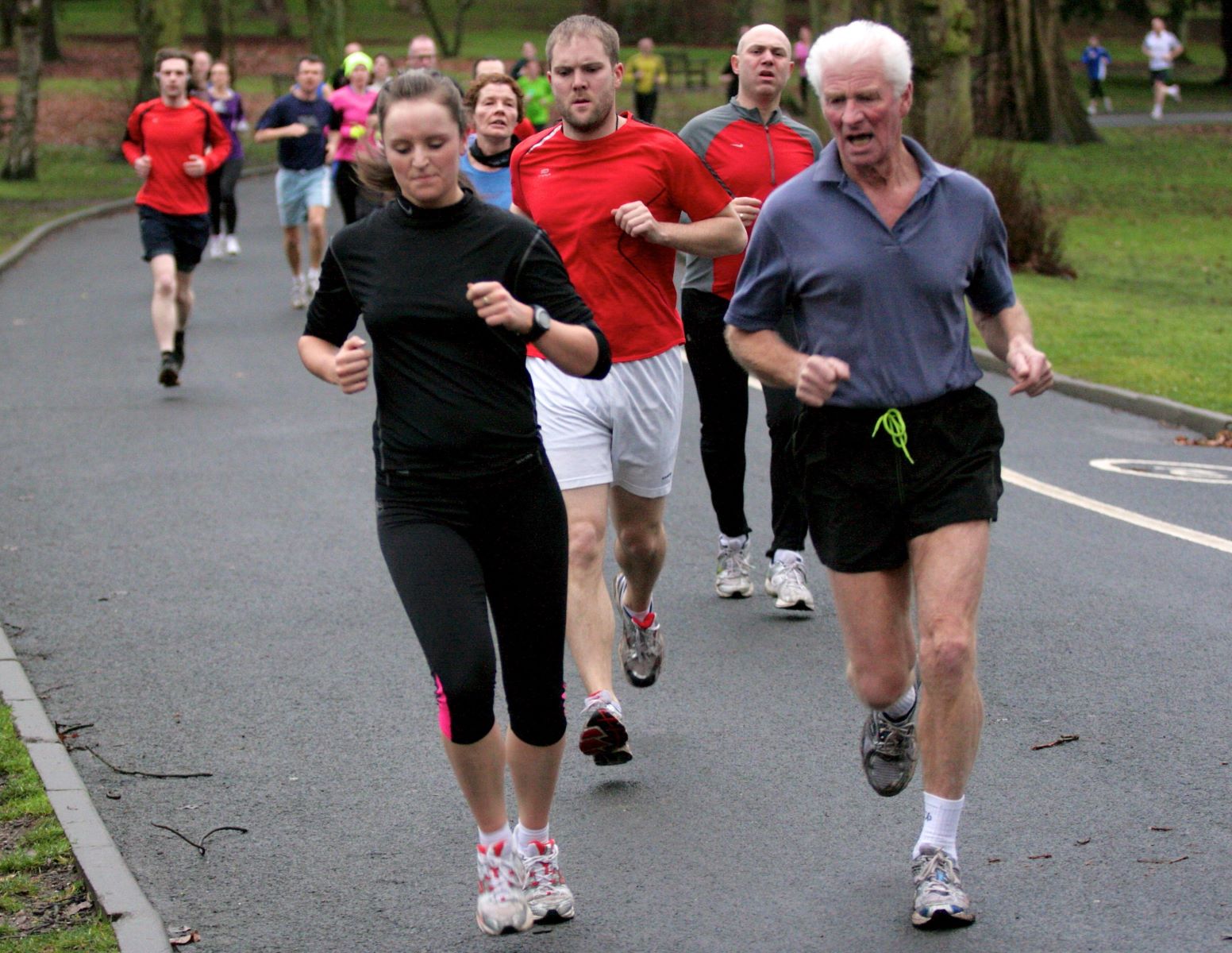Home>Training & Techniques>Improving Your Running Skills Indoors: 7 Effective Methods


Training & Techniques
Improving Your Running Skills Indoors: 7 Effective Methods
Published: February 29, 2024
Enhance your running abilities with these 7 effective indoor training and techniques. Improve your skills and performance with expert tips and methods.
(Many of the links in this article redirect to a specific reviewed product. Your purchase of these products through affiliate links helps to generate commission for Therunningadvisor.com, at no extra cost. Learn more)
Table of Contents
The Benefits of Indoor Running
Indoor running offers a myriad of advantages that cater to various needs and preferences. Whether you're a seasoned runner or just starting, incorporating indoor running into your routine can significantly impact your overall performance and well-being. Here are some compelling benefits of indoor running:
-
Weather Independence: One of the most significant advantages of indoor running is the freedom from weather constraints. Regardless of the outdoor conditions, you can maintain your running schedule without worrying about rain, snow, extreme heat, or cold temperatures. This consistency in training can lead to improved performance and better results.
-
Safety and Security: Running indoors provides a secure environment, especially during early mornings or late evenings when outdoor conditions may not be ideal. This ensures a reduced risk of accidents, encounters with stray animals, or potential hazards that may be present in outdoor settings.
-
Controlled Environment: Indoor running allows you to control various factors such as temperature, humidity, and air quality. This control can be particularly beneficial for individuals with respiratory conditions or allergies, as they can create an environment that minimizes potential triggers and discomfort.
-
Enhanced Focus and Convenience: With indoor running, you can eliminate distractions commonly encountered outdoors, such as traffic, uneven terrain, or unpredictable obstacles. This enables you to focus solely on your running form, breathing, and performance, leading to a more concentrated and effective workout.
-
Technology Integration: Utilizing treadmills and indoor running apps can provide valuable data and insights into your performance, including distance covered, pace, heart rate, and calorie expenditure. This technological integration can help you track progress, set goals, and make informed adjustments to your training regimen.
-
Injury Prevention and Recovery: Indoor running on cushioned surfaces can reduce the impact on joints, minimizing the risk of injuries often associated with outdoor running on hard pavement or uneven terrain. Additionally, for individuals recovering from injuries, indoor running can offer a controlled environment for gradual rehabilitation and conditioning.
-
Time Efficiency: Indoor running eliminates the time spent traveling to outdoor running locations, making it a time-efficient option for individuals with busy schedules. This convenience allows for more flexibility in incorporating running into daily routines, ultimately promoting consistency and adherence to training plans.
Incorporating indoor running into your fitness regimen can provide a versatile and effective alternative to outdoor running, offering a range of benefits that cater to different preferences and circumstances. Whether you're seeking a controlled environment for focused training, a weather-independent workout option, or a secure setting for injury prevention, indoor running presents a compelling solution for runners of all levels.
Utilizing Treadmills for Improved Running
Treadmills are versatile fitness tools that offer a myriad of benefits for runners seeking to enhance their performance and overall running experience. Whether you're a beginner looking to build endurance or a seasoned athlete aiming to fine-tune your training, incorporating treadmills into your running regimen can yield significant improvements. Here's a detailed exploration of how treadmills can be effectively utilized to elevate your running skills:
1. Controlled Pace and Incline
Treadmills provide the advantage of setting and maintaining a consistent pace and incline throughout your run. This feature allows you to simulate specific outdoor running conditions, such as uphill climbs or varying speeds, while ensuring precise control over these parameters. By adjusting the incline and speed settings, you can tailor your workouts to target different muscle groups, improve cardiovascular endurance, and enhance overall running performance.
2. Weather-Independent Training
The convenience of treadmill running extends beyond weather independence. Regardless of external conditions, you can engage in structured and focused training sessions within the comfort of an indoor environment. This consistent access to running opportunities enables you to adhere to training schedules and work towards your fitness goals without being hindered by external factors.
3. Performance Tracking and Analysis
Modern treadmills are equipped with advanced features that allow for comprehensive performance tracking and analysis. From monitoring heart rate and calorie expenditure to tracking distance covered and pace, these integrated technologies provide valuable insights into your running metrics. By leveraging this data, you can assess your progress, identify areas for improvement, and make informed adjustments to optimize your training regimen.
4. Interval Training and Speed Work
Treadmills are ideal for incorporating interval training and speed work into your running routine. The ability to precisely control speed and incline facilitates structured interval sessions, helping to improve anaerobic capacity, speed, and overall running efficiency. By integrating interval training on treadmills, you can effectively enhance your ability to sustain faster paces and build endurance, ultimately translating to improved outdoor running performance.
5. Injury Prevention and Rehabilitation
For individuals recovering from injuries or seeking to minimize impact on joints, treadmills offer a cushioned and controlled running surface. This can significantly reduce the risk of impact-related injuries and provide a supportive environment for gradual rehabilitation. Additionally, the ability to adjust speed and incline allows for customized workouts that cater to specific rehabilitation needs, promoting safe and effective recovery.
Incorporating treadmills into your running routine presents a dynamic and effective approach to improving your overall running skills. By leveraging the diverse benefits of treadmills, including controlled pace and incline, weather-independent training, performance tracking, interval training, and injury prevention, you can elevate your running performance, enhance endurance, and work towards achieving your fitness objectives.
Incorporating Interval Training
Interval training is a highly effective method for enhancing running performance and overall cardiovascular fitness. By alternating between periods of high-intensity exertion and active recovery, interval training stimulates physiological adaptations that can significantly elevate endurance, speed, and aerobic capacity. When incorporated into a running regimen, interval training offers a structured approach to improving running skills and achieving specific performance goals.
1. Structured Intensity Variation
Interval training on a treadmill allows runners to precisely control and manipulate the intensity of their workouts. By alternating between intervals of high-intensity running and periods of active recovery or lower intensity, runners can challenge their cardiovascular system, improve anaerobic capacity, and enhance overall running efficiency. This structured variation in intensity stimulates physiological adaptations that lead to improved endurance and speed, enabling runners to sustain higher paces for longer durations.
Read more: Maximize Your Run Commute With These 7 Tips
2. Adaptability to Skill Levels
One of the key advantages of interval training is its adaptability to accommodate varying skill levels and fitness objectives. Whether you're a novice runner aiming to build endurance or an experienced athlete targeting speed improvements, interval training can be tailored to align with individual goals. Beginners can start with shorter intervals and gradually increase intensity, while seasoned runners can engage in advanced interval protocols to push their limits and maximize performance gains.
3. Time-Efficient Workouts
Incorporating interval training into a running routine offers the benefit of time efficiency. High-intensity intervals interspersed with active recovery periods allow for a substantial training stimulus within a shorter time frame. This time-efficient approach is particularly advantageous for individuals with busy schedules, as it enables them to achieve significant physiological adaptations and performance enhancements without prolonged training sessions.
4. Enhanced Caloric Expenditure
The high-intensity nature of interval training results in elevated caloric expenditure both during and after the workout. This post-exercise calorie burn, often referred to as excess post-exercise oxygen consumption (EPOC), contributes to overall energy expenditure and can support weight management and body composition goals. By integrating interval training into a running regimen, individuals can optimize their workouts to promote both performance improvements and metabolic benefits.
5. Performance Adaptations
Consistent incorporation of interval training can lead to notable performance adaptations, including improved lactate threshold, enhanced VO2 max, and increased running economy. These physiological enhancements translate to greater endurance, faster race times, and the ability to sustain higher speeds with reduced fatigue. By strategically integrating interval training sessions into a comprehensive training plan, runners can cultivate the specific adaptations necessary for achieving their desired performance outcomes.
In summary, interval training serves as a potent tool for elevating running skills and performance. By leveraging structured intensity variation, adaptability to different skill levels, time efficiency, enhanced caloric expenditure, and performance adaptations, runners can harness the transformative benefits of interval training to realize their full athletic potential and achieve their running aspirations.
Strength Training for Runners
Strength training plays a pivotal role in enhancing the performance, resilience, and overall capabilities of runners. By incorporating targeted strength training exercises into a comprehensive training regimen, runners can cultivate muscular strength, improve running economy, and mitigate the risk of injuries. The integration of strength training not only complements the cardiovascular and endurance-focused aspects of running but also contributes to a well-rounded athletic foundation. Here's an in-depth exploration of the significance and benefits of strength training for runners:
1. Muscular Resilience and Injury Prevention
Engaging in strength training exercises, such as squats, lunges, and calf raises, fortifies the muscles and connective tissues essential for running. By strengthening the lower body musculature, runners can enhance joint stability, reduce the likelihood of overuse injuries, and promote overall musculoskeletal resilience. Additionally, targeted strength training can address muscular imbalances and weaknesses, which are common precursors to running-related injuries, thereby fostering a more robust and injury-resistant physiological framework.
2. Running Economy and Efficiency
The integration of strength training into a runner's regimen can lead to improvements in running economy and overall efficiency. Enhanced muscular strength and power output contribute to more forceful and propulsive strides, allowing runners to cover distances with greater ease and reduced energy expenditure. Furthermore, strengthened core muscles play a crucial role in maintaining proper posture and form during running, optimizing biomechanical efficiency and minimizing energy dissipation, ultimately translating to improved performance outcomes.
3. Power and Speed Development
Strength training facilitates the development of explosive power and speed, attributes that are instrumental for sprinting, hill climbing, and surges during races. Plyometric exercises, such as box jumps and bounding drills, can enhance neuromuscular coordination and fast-twitch muscle activation, enabling runners to generate greater propulsion and acceleration. By integrating power-focused strength training, runners can elevate their capacity for rapid bursts of speed and capitalize on strategic race opportunities.
Read more: Improve Your Running With This Hyrox Workout
4. Endurance and Fatigue Resistance
While endurance running predominantly emphasizes aerobic capacity, strength training contributes to the overall endurance profile of runners. Strengthening the muscles involved in running, particularly the quadriceps, hamstrings, and calf muscles, can delay the onset of muscular fatigue and attenuate the impact of prolonged running on these muscle groups. This extended fatigue resistance can be particularly advantageous during long-distance events, enabling runners to sustain pace and performance over extended durations.
5. Injury Rehabilitation and Recovery
In instances where runners encounter injuries, strength training serves as a valuable component of rehabilitation and recovery. Targeted exercises under the guidance of a qualified professional can aid in the restoration of muscular strength, flexibility, and functional movement patterns, facilitating a safe and effective return to running activities. Moreover, ongoing strength training can serve as a proactive measure to prevent recurring injuries and promote long-term athletic durability.
Incorporating a well-structured and purposeful strength training regimen into a runner's overall training plan can yield multifaceted benefits, ranging from injury prevention and improved running economy to enhanced power development and fatigue resistance. By recognizing the integral role of strength training in optimizing running performance and fostering athletic longevity, runners can cultivate a balanced and resilient foundation that supports their pursuit of running excellence.
Cross-Training for Enhanced Performance
Cross-training serves as a strategic and multifaceted approach to augmenting running performance and overall athletic capabilities. By integrating diverse forms of physical activity beyond traditional running, individuals can reap a spectrum of physiological, biomechanical, and mental benefits that collectively contribute to enhanced performance outcomes. The incorporation of cross-training into a comprehensive training regimen offers a holistic and dynamic framework for runners to optimize their athletic potential and achieve sustained progress.
1. Diversified Muscular Engagement
Engaging in cross-training activities, such as cycling, swimming, or strength-based workouts, introduces varying movement patterns and muscular demands that complement the repetitive nature of running. This diversified engagement stimulates the recruitment of different muscle groups, fostering overall muscular balance and resilience. By addressing muscle imbalances and reducing the risk of overuse injuries, cross-training contributes to a more robust physiological foundation, enabling runners to sustain consistent training and performance levels.
Read more: 7 Easy Exercises To Strengthen Your Joints
2. Injury Risk Mitigation
Cross-training plays a pivotal role in mitigating the risk of running-related injuries by alleviating the repetitive stress placed on specific muscles and joints during running. Low-impact activities, including swimming and cycling, offer an opportunity for active recovery and cardiovascular conditioning without subjecting the body to the impact forces associated with running. This strategic diversification of training modalities supports injury prevention and provides a platform for runners to maintain fitness levels while minimizing the potential for overuse injuries.
3. Aerobic Capacity and Endurance Enhancement
Incorporating cross-training activities that target cardiovascular fitness, such as swimming or elliptical training, can contribute to the development of aerobic capacity and endurance. These activities offer a complementary stimulus to traditional running, promoting cardiovascular adaptations and enhancing the body's ability to utilize oxygen efficiently. By expanding the aerobic capacity through cross-training, runners can elevate their endurance thresholds and improve their capacity to sustain prolonged efforts during running events and training sessions.
4. Mental Refreshment and Motivation
The inclusion of cross-training activities provides a mental respite from the repetitive demands of running, offering a refreshing and stimulating change of pace. Engaging in alternative activities can reignite motivation, prevent training monotony, and alleviate mental fatigue often associated with prolonged focus on a single form of exercise. This mental refreshment fosters a positive mindset, rejuvenates enthusiasm for training, and promotes a balanced approach to overall fitness and well-being.
5. Performance Adaptability and Versatility
Cross-training cultivates physical adaptability and versatility, enabling runners to develop a broader athletic skill set that transcends the confines of traditional running. By honing skills in activities such as swimming, cycling, or functional strength training, runners can enhance their overall athleticism, coordination, and agility. This expanded physical repertoire not only contributes to improved running performance but also fosters a well-rounded and adaptable athletic profile that can translate to diverse sporting and recreational pursuits.
In essence, cross-training serves as a cornerstone of comprehensive athletic development, offering a spectrum of benefits that extend beyond the confines of traditional running. By embracing the diversified muscular engagement, injury risk mitigation, endurance enhancement, mental refreshment, and performance adaptability facilitated by cross-training, runners can cultivate a resilient and versatile athletic foundation that underpins sustained performance excellence.
Read more: The Effects Of Running On Your Body
Mental Preparation and Focus
Mental preparation and focus are integral components of a runner's training and performance arsenal, wielding profound influence over the attainment of athletic goals and the navigation of challenges inherent to the sport. The cultivation of a resilient and focused mindset is paramount in optimizing running performance, overcoming mental barriers, and sustaining motivation throughout the training journey.
1. Mind-Body Synchronization
Achieving mental preparedness involves fostering synchronization between the mind and body, aligning cognitive processes with physical exertion. By honing the ability to maintain mental clarity and focus during running, individuals can optimize their performance, regulate effort distribution, and navigate the discomfort associated with prolonged exertion. This synchronization facilitates a harmonious interplay between mental fortitude and physical resilience, enabling runners to push beyond perceived limitations and sustain performance at optimal levels.
2. Visualization and Positive Affirmations
Incorporating visualization techniques and positive affirmations into mental preparation routines can significantly enhance focus and bolster confidence. Visualization allows runners to mentally rehearse race scenarios, envision successful outcomes, and familiarize themselves with challenging course segments, thereby reducing performance anxiety and instilling a sense of preparedness. Similarly, the use of positive affirmations cultivates a resilient and optimistic mindset, reinforcing self-belief and fortifying mental resolve in the face of adversity.
3. Stress Management and Relaxation Techniques
Effective mental preparation encompasses the integration of stress management and relaxation techniques to mitigate pre-race jitters and alleviate performance-related pressure. By leveraging mindfulness practices, deep breathing exercises, and progressive muscle relaxation, runners can modulate stress responses, regulate arousal levels, and attain a state of mental composure conducive to optimal performance. These techniques empower individuals to navigate race-day nerves and maintain a poised and focused demeanor throughout the running experience.
4. Goal-Oriented Mindset and Adaptive Thinking
Cultivating a goal-oriented mindset and embracing adaptive thinking are fundamental to mental preparation and focus. Setting clear and attainable performance objectives empowers runners to channel their focus towards specific outcomes, fostering a sense of purpose and direction during training and competition. Additionally, embracing adaptive thinking enables individuals to navigate unforeseen challenges, adjust pacing strategies, and maintain mental agility in response to dynamic race conditions, ultimately enhancing resilience and performance adaptability.
5. Mindfulness and Present-Moment Awareness
The practice of mindfulness and present-moment awareness serves as a cornerstone of mental preparation, enabling runners to anchor their focus in the present and cultivate heightened sensory awareness. By immersing themselves in the current running experience, individuals can optimize form, regulate breathing patterns, and attune their mental faculties to the immediate demands of the activity. This heightened mindfulness fosters a deep connection with the running process, promoting mental acuity and facilitating sustained focus throughout training and racing endeavors.
In essence, mental preparation and focus constitute indispensable facets of a runner's holistic training approach, wielding profound influence over performance optimization, resilience cultivation, and the navigation of psychological barriers. By integrating mind-body synchronization, visualization techniques, stress management, goal-oriented thinking, and mindfulness practices into their training regimen, runners can fortify their mental fortitude, optimize focus, and unlock their full athletic potential.
Monitoring Progress and Setting Goals
Monitoring progress and setting goals are fundamental pillars of a runner's journey towards continuous improvement and performance optimization. By implementing a systematic approach to tracking progress and establishing clear, actionable goals, runners can navigate their training endeavors with purpose, precision, and a strategic outlook towards long-term development.
1. Data-Driven Progress Tracking
Utilizing technology, such as GPS running watches and fitness tracking apps, enables runners to capture comprehensive data on their training sessions. Metrics including distance covered, pace variations, heart rate trends, and elevation changes provide valuable insights into performance trends and physiological adaptations. By leveraging this data, runners can objectively monitor progress, identify patterns, and make informed adjustments to their training protocols.
Read more: Top 10 Running Skills Workouts
2. Performance Benchmarks and Milestones
Establishing performance benchmarks and milestones serves as a framework for gauging progress and setting incremental targets. By defining specific time-based or distance-based milestones, runners can track their advancements, celebrate achievements, and recalibrate their goals based on attained milestones. This iterative process of setting and surpassing benchmarks fosters a sense of accomplishment and fuels motivation for sustained progress.
3. Periodic Assessments and Evaluations
Incorporating periodic assessments, such as fitness tests, time trials, or race simulations, provides opportunities for objective evaluations of current capabilities and areas for improvement. These assessments serve as checkpoints for progress evaluation, enabling runners to gauge their readiness for specific events, identify performance gaps, and tailor their training focus to address identified weaknesses.
4. Goal Setting and Strategic Planning
Setting clear, measurable, and realistic goals is pivotal in guiding training efforts and fostering a sense of purpose. Whether aiming for a personal best in a race, targeting specific time goals, or pursuing distance milestones, articulating precise objectives empowers runners to align their training strategies with their desired outcomes. Strategic planning around goal attainment involves breaking down overarching objectives into actionable steps, creating a roadmap for progressive development.
5. Adaptability and Flexibility
While setting ambitious goals is essential, maintaining adaptability and flexibility in goal setting is equally crucial. External factors, such as injury recovery, weather conditions, or life commitments, may necessitate adjustments to initial goals. Embracing adaptability allows runners to recalibrate their aspirations in response to evolving circumstances, ensuring that their goals remain relevant and attainable within the dynamic nature of the running journey.
By integrating a comprehensive framework for monitoring progress and setting goals, runners can navigate their training with clarity, purpose, and a proactive mindset. This structured approach not only facilitates continuous improvement but also fosters resilience, adaptability, and a sustained commitment to the pursuit of running excellence.








